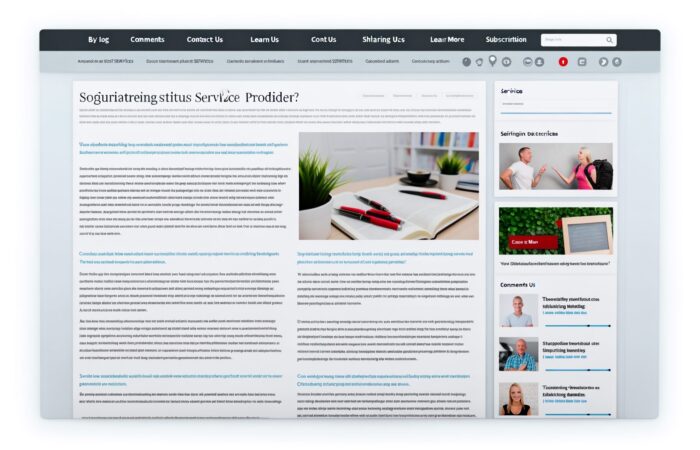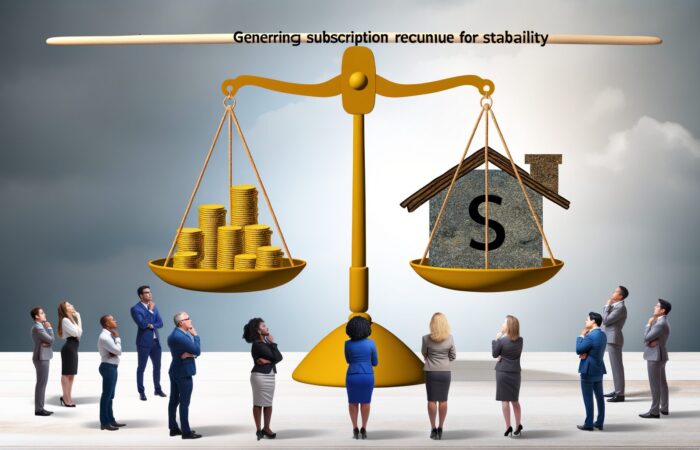Leveraging Existing Audiences and Content
Have you ever wondered what magic you could spin by simply looking around at what you already have? I’m talking about your current audience and the content you’ve already created. It’s like finding treasure in your own backyard! 🌟
Whether you’re a blogger, a business owner, or a social media enthusiast, understanding how to leverage your existing resources can not only save you time and effort but can also significantly amplify your impact. Let’s dive into why this approach is so effective and how you can start making the most of it today.
Why Leverage What You Already Have?
First things first, leveraging your existing audience and content means you’re not starting from scratch. Think about it; you’ve already got a group of people interested in what you have to say or sell. Why not make the most of this eager audience?
- Cost-effective: It’s much cheaper to engage an existing customer than to attract a new one. The same goes for content.
- Time-saving: You’ve already done the hard work once. Repurposing content or refocusing on your current audience saves time, allowing you to focus on other areas of growth.
- Better targeting: You already know what they like and dislike. Using this data can help you create even more compelling content or products.
Getting Started with Audience and Content Analysis
Before you can start leveraging, you need to understand what you’ve got. Who exactly is your audience? What content has worked well in the past? This isn’t just about looking at numbers; it’s about understanding the story behind those numbers. Are there certain blog posts that get more shares? Do some of your products get more reviews?
Once you have a grasp on these elements, you’re ready to start the fun part—making everything work harder for you!
Engage and Re-engage
Got a newsletter that’s gathering dust? Or a blog post from last year that everyone loved? These are goldmines waiting to be tapped! Update them, add fresh insights, or convert them into a different format. Maybe that popular blog post could become a video tutorial, or part of an email series?
Remember, engaging doesn’t mean bombarding your audience with content. It’s about creating meaningful interactions that add value. It’s like having a friendly chat over coffee, where you bring up something you both love talking about—it’s enjoyable and enriching!
Wrap-Up
Leveraging your existing audience and content isn’t just a strategy; it’s an ongoing dialogue with your community. It’s about nurturing the relationship you’ve built and showing that you value their time and feedback. And hey, who wouldn’t want to feel valued?
So, take a look around at the treasures you already have, and start thinking about how you can extend their life and effectiveness. It’s not just about growth; it’s about smart, sustainable engagement. Ready to get started? 🚀
Analyzing Your Current Audience: Tools and Techniques
🎉 So, you’re ready to dive deep into the exciting world of audience analysis? Fantastic! It’s like being a detective in your own business, uncovering clues about what makes your audience tick. Understanding who’s tuning in can help you tailor your content to better meet their needs, ultimately boosting engagement and loyalty. Let’s break down some tools and techniques that can make this process both fun and fruitful.
Getting Started with Google Analytics
One of the most robust tools at your fingertips is Google Analytics. It’s like the Swiss Army knife for audience analysis. By integrating this tool into your website, you can see not just who visits your site, but how they interact with your content. Are they binge-reading your blog posts? Do certain topics keep them on your site longer? Google Analytics can show you all this and more. It’s all about diving into the Behavior and Audience Overview sections to get a feel for your visitor demographics and their onsite behaviors.
Exploring Social Media Insights
If you’re active on social media (and who isn’t these days?), platforms like Facebook, Instagram, and Twitter offer their own analytics tools. For instance, Instagram Insights provides a wealth of data on your followers’ demographics and when they’re most active. This info can help you pinpoint the best times to post and reveal what type of content resonates with your audience. A quick look at profile visits, website clicks, and engagement rates will tell you if your social strategies are working or if it’s time to mix things up.
Conducting Surveys and Polls
Another great way to get inside your audience’s minds? Ask them directly through surveys and polls! Tools like SurveyMonkey or Google Forms make it easy to gather feedback. You can ask about their preferences, challenges, and even what future content they’d love to see from you. This direct line of communication not only provides valuable insights but also makes your audience feel valued and heard.
Email Analytics
Do you send out newsletters or email updates? Email marketing platforms like MailChimp or Constant Contact offer detailed reports on open rates and click-through rates. This data helps you understand what kind of email content captures attention and encourages interaction.
- Open Rate: Gives you a percentage of how many people opened your emails, a direct indicator of how compelling your subject line was.
- Click-through Rate (CTR): Shows what percentage of recipients clicked on links within your email, helping you gauge the effectiveness of your call-to-action.
Heat Maps
Curious about which parts of your website are getting the most attention? Heat mapping tools like Hotjar or Crazy Egg provide visual representations of where users click, scroll, and linger. It’s like seeing your website through your visitors’ eyes, revealing what areas draw interest and which might need a revamp.
To wrap it up, understanding your audience doesn’t require psychic powers—just the right tools and a bit of curiosity. Whether you’re a newbie or a seasoned pro, regularly checking in on your audience’s behavior helps ensure your content strategy remains on point and powerful. So, go ahead and channel your inner detective—your audience will thank you for it!
Identifying Content Gaps and Opportunities
Ever find yourself wondering why certain posts get all the likes and shares, while others just… don’t? Well, you might be missing out on some key content gaps and opportunities. Let’s dive into how you can spot these and turn them into your next big hits!
What’s a Content Gap Anyway?
Think of a content gap as an unexplored territory on your favorite map. It’s that little spot where your audience is hungry for information, but you haven’t quite given them what they need yet. Finding these gaps means you can create content that truly resonates and satisfies those curiosities.
Spotting the Gaps
Identifying content gaps isn’t just about guesswork; it’s about strategy. Here’s how you can start:
- Review Your Analytics: Dive into your website and social media analytics. Which posts are performing well? More importantly, what are people searching for when they find your site? Look for trends and topics that are getting attention but aren’t fully covered on your channels.
- Check Out the Competition: What are your competitors talking about? Is there an angle or a topic they might have overlooked that your audience would love to know more about? This can be a goldmine for new content ideas.
- Listen to Your Audience: Sometimes, the best way to find out what your audience wants is simply by listening. Comments, surveys, and social media can all provide incredible insights into what your viewers are craving.
Filling the Gaps
Now that you’ve spotted some gaps, how do you fill them? Easy peasy!
- Create Targeted Content: Start crafting content that addresses the gaps you’ve identified. Whether it’s blog posts, videos, or infographics, make sure it’s targeted and relevant.
- Utilize SEO Best Practices: Use the right keywords to make sure your content gets seen. SEO isn’t just about getting to the top of search results; it’s about reaching the right people with the right answers.
- Ask for Feedback: Once your content is out there, ask your audience what they think. This not only helps in refining your approach but also makes your audience feel valued and heard.
Why Bother With Content Gaps?
Addressing content gaps does more than just fill blank spaces on your content calendar. It builds authority, increases engagement, and keeps your audience coming back for more. When you provide something no one else does, you stand out in the ever-crowded world of online content.
So, why not take some time this week to investigate and start filling those content gaps? Your audience will thank you, and you’ll likely see a nice bump in engagement and loyalty. Cheers to being a content gap filling superstar!
Strategies for Repurposing Old Content
Ever looked through your old blog posts, videos, or social media content and thought, “Hmm, wasn’t that a golden nugget?” Well, you’re not alone! Repurposing old content is like rummaging through your attic and finding antiques to polish and display once more. Let’s dive into how you can breathe new life into those dusty digital gems.
Refresh and Relaunch
Update your statistics and examples: Content can age like fine wine or like milk; it all depends on relevance. Take a look at your most successful posts. Could they use updated data or fresh examples? This minor tweak can revitalize an old piece, making it relevant and engaging for today’s audience.
Mix Up the Format
Who says content has to stay in its original format? That detailed blog post can transform into a snappy infographic, a fun video, or even a podcast episode. This not only extends the shelf life of your content but also reaches different segments of your audience who prefer one format over another. Consider these transformations:
- Blog to Video: Summarize the key points of an article in a short video. It’s perfect for visual learners and social media shares!
- Podcast to Blog: Transcribe your podcasts and turn them into blog posts or downloadable guides. It’s great for SEO and reaching those who prefer reading over listening.
Create a Content Series
Found a piece that sparked a lot of engagement? Stretch out that topic by creating a series. Break down the original content into more detailed segments, or expand on each subtopic over multiple posts or episodes. This keeps your audience coming back for more, eagerly anticipating the next installment.
Combine and Conquer
Sometimes, little bits and pieces from various contents can be combined to create a comprehensive guide or ebook. This ‘best of’ approach not only helps in consolidating your content but also provides massive value to your audience. Imagine combining several blog posts about social media marketing into a single, ultimate guide. It’s efficient and effective!
There’s a reason #ThrowbackThursday is eternally popular. Nostalgia is a powerful tool. Share your old content on social media as a throwback, adding a brief reflection on how things have changed or what’s stayed the same since then. It’s a personal touch that can often resonate well with your community.
In conclusion, repurposing content isn’t just about saving time and resources; it’s about maximizing the impact of your existing work and continuously serving your audience the best you can. So, why not give your old content a new lease on life? Your audience (and your content calendar) will thank you!
Engaging Your Audience to Generate New Ideas
Ever felt like you’re talking into a void when creating content? Well, I’ve got a little secret for you: your audience is a goldmine of fresh, vibrant ideas waiting to be tapped into! Engaging with them can transform your content creation process from a monologue to a thrilling dialogue. Let’s dive into how you can harness this valuable resource.
Why Bother Engaging?
First off, let’s talk about why it’s so worthwhile to engage your audience. Think of it this way: who better to tell you what your audience wants than… your audience themselves? This engagement not only boosts your content’s relevance but also fosters a stronger community feeling, making your audience more loyal and passionate about your brand.
Easy and Effective Ways to Engage
- Social Media Polls and Questions: Use your social platforms to ask your audience what topics they’re interested in or what challenges they’re facing. It’s quick, easy, and the responses can be incredibly insightful.
- Feedback Forms: Sometimes, you might want more detailed feedback. That’s where feedback forms come in. They can be as simple or as detailed as you need, and they’re great for collecting more extensive data.
- Comment Sections: Never underestimate the power of the comment section. Engage actively with comments. Ask follow-up questions, tease upcoming content, or simply show your appreciation. This interaction keeps the conversation going and deepens connections.
Turning Engagement Into Action
Once you’ve gathered all these juicy insights, the real fun begins. This is your chance to turn feedback into actionable steps that align your content with your audience’s desires. Here’s how you can make the magic happen:
- Review and Analyze: Start by going through the feedback. Look for common themes or frequently requested topics.
- Plan Your Content: Use the insights to plan new content or tweak existing content. Maybe there’s a topic that keeps popping up that you haven’t covered yet?
- Keep Your Audience Updated: Let your audience know their voices have been heard. Tease new content that’s based on their feedback. A simple “asked and answered” series can work wonders!
Remember, engaging your audience isn’t just about gathering ideas; it’s about building a community that feels valued and heard. When you open up the floor to your audience, you’re telling them that their thoughts and opinions matter. This not only enhances your content but also strengthens your relationship with your audience.
Turning Feedback Into Fantastic Content
Let’s dive into one of the most thrilling parts of content creation: implementing audience feedback. It’s like having a direct line to what your audience craves, and honestly, it can be a total game-changer for your content strategy. Excited? You should be! Let’s unpack this together.
Why Audience Feedback is Gold
First things first, feedback from your audience is incredibly valuable. It’s real, it’s raw, and it’s often loaded with insights. Whether it’s praise, constructive criticism, or just curiosity about a topic, each piece of feedback is a little nugget of gold you can use to refine your content and make it more engaging.
Collecting Feedback: Keep It Simple
So, how do you start collecting this precious feedback? Keep it simple! Use tools like surveys, comments sections on your blog, social media polls, or even direct emails. Invite your audience to share their thoughts and make sure they know their voices are heard and valued.
From Feedback to Action
Now that you’ve got the feedback, what’s next? Action! Here’s how you can translate what you’ve learned into better content:
- Sort and Prioritize: Not all feedback will be immediately actionable. Sort through the feedback, prioritize what aligns with your content goals, and plan accordingly.
- Spot Patterns: Look for common themes or repeated suggestions. If multiple people are asking for the same thing, it’s a clear signal that this is a hot topic for your audience.
- Test New Ideas: Use feedback to experiment with new content types or topics. This can be a low-risk way of testing how new ideas perform before fully committing to them.
- Address Concerns: If there are criticisms, don’t shy away. Address them head-on by improving aspects of your content that may not be hitting the mark.
Feedback Loops: Keep the Conversation Going
Implementing feedback isn’t a one-off task. It’s about creating a feedback loop where you continuously engage with your audience, implement changes, and ask if you’ve met their expectations. This ongoing dialogue is what builds a loyal and engaged community.
Real Examples, Real Success
Wondering if this really works? Let me tell you about a blogger who revamped their weekly newsletter based on reader suggestions to include more personal stories. Their engagement rates soared because readers felt a deeper connection with the content. Or a YouTuber who started creating behind-the-scenes videos after fans expressed curiosity about the production process. Their channel subscriptions doubled!
See the magic? Implementing audience feedback isn’t just about tweaking your content; it’s about transforming your relationship with your audience. It makes your content strategy dynamic, responsive, and, most importantly, community-focused. So, go ahead, start listening, and let your audience help you craft some truly amazing content.
Monitoring Success and Adapting Strategies
So, you’ve rolled out some fabulous content and engaged with your audience, but how do you know if it’s really hitting the mark? Let’s dive into the exciting world of monitoring success and adapting your strategies. This is where the magic happens in ensuring your content not only shines but also delivers real results!
Why Track Your Success?
Think of monitoring as your content’s report card. It tells you what subjects (or in this case, content) your audience loves, and where there might be room for improvement. Without this insight, you’re basically throwing darts in the dark. Tracking allows you to celebrate your wins and tweak your strategies for even better results.
The Tools of the Trade
Alright, so how do we start tracking? Here are a few tools that can turn you into a monitoring guru:
- Google Analytics: Great for tracking website traffic, engagement rates, and oh, so much more.
- Social Media Analytics: Each platform offers its own analytics to help you understand performance specifics like shares, likes, and comments.
- Email Campaign Software: Useful for checking open rates and click-through rates of your newsletters or promotional emails.
Key Metrics to Keep an Eye On
You’ve got the tools, but what exactly are you looking for? Here’s a little cheat sheet of key metrics to monitor:
- Engagement Rates: This includes likes, comments, shares, and overall interaction. High engagement rates generally indicate content that resonates well with your audience.
- Traffic Sources: Knowing where your visitors come from can help you target your efforts more effectively.
- Conversion Rates: If your content includes calls-to-action, you’ll want to see how many people are taking the next step.
Adapting Based on Insights
Now comes the critical part: using what you’ve learned to adapt. Noticed that how-to videos are your biggest hit? It might be time to create more. Found out that Tuesday posts get more attention? Adjust your posting schedule accordingly.
Remember, the goal isn’t just to collect data but to act on it. Small tweaks can lead to significant improvements. Maybe it’s changing up your content formats, adjusting your posting times, or even redirecting your focus to platforms that garner more engagement.
Iteration is Key
Lastly, remember that adapting your strategy is not a one-time deal. It’s about continuous improvement. Keep the cycle going: monitor, learn, adapt, and repeat. This iterative process is the key to staying relevant and keeping your audience hooked.
So, keep your eyes on the data, stay flexible in your approach, and watch your content strategy thrive. Here’s to making your next piece of content even more successful than the last!











No Comment! Be the first one.